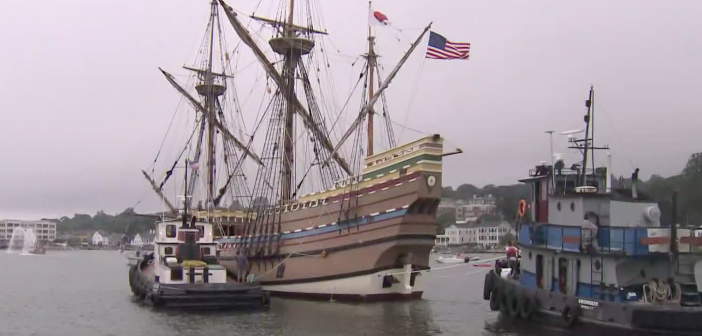The Mayflower is heading for Plymouth, Massachusetts – again. A replica of one of the most historic ships of all time, the Mayflower just left Mystic, Connecticut, after a major restoration, and is sailing up the coast to Plymouth, where the original landed in 1620.
The real Mayflower sailed from Plymouth, England, on Sept. 16, 1620, and made landfall in the New World 60 days later on what is now Cape Cod Bay near Provincetown. (It actually had been headed for Virginia, but got blown off course.) It carried a crew of about 30 and 102 Pilgrims. The ship probably had four decks, was about 90 feet long, and weighed 180 tons. After the crew explored the Cape Cod area in small boats, the Mayflower landed at Plymouth on Dec. 18, 1620.
The historic reproduction was built in 1956, and has spent the past four years in an $11.2 million renovation at the Mystic Seaport Museum. The keel was saved, but about 75 percent of the vessel is new. The hull planking, for example, was replaced with 20,000 board feet of Danish white oak. One totally new feature: a state-of-the-art fire suppression system.
The Mayflower, with a crew of 27, was just towed out of Mystic (see picture above), and will undergo some sea trials out of New London, Connecticut, before heading up the coast.
The original plan was for the new Mayflower to visit ports in the Northeast and eventually lead a parade of ships, including the U.S.S. Constitution, for a maritime festival in Boston this summer. But all those plans were cancelled because of COVID-19.
Now the Mayflower will make two overnight stops on the way to Plymouth, but no one will be allowed on board. “Our goal is to keep the crew as isolated as possible,” said Kate Sheehan, from the Plimoth Plantation. “So the public will not be on board the ship at any point during the journey. We’re just being very, very careful about the crew’s exposure.” Read more:
https://apnews.com/411a4f597bd2dfeafc93f9fca43699c2




